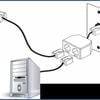
Diameter Signaling Controllers (DSCs) are the general term used to describe products that enable load balancing and scaling of Diameter signaling traffic on LTE/IMS networks as well as enabling secure signaling interworking of LTE/IMS networks with other networks. The DSCs first rolled out were the Diameter Routing Agents (DRAs) which were really designed for load balancing and scaling of Diameter signaling traffic. And these have seemingly worked well since we have not heard of any major Diameter signaling storms since the first LTE networks were deployed. Whether it’s because the DRAs are deployed or because the existing equipment could handle it is somewhat up for debate, but clearly in the early days of LTE rollouts there were a couple of high profile outages related to signaling storms.
But DSCs are not just about the DRA piece. Perhaps more important to the DSC is the interworking aspect, because LTE networks don’t exist all by themselves on their own playing field. Today, 4% of connections / 7% of subscribers are on LTE networks and even by the years 2017 and 2018, we’re talking between 15% to at most 25% of subscribers on LTE networks, so the 2G/3G networks will still dominate. Interworking with them, and with WiFi networks, will be crucial. Roaming is certainly a huge use case. This is really the key to the Phase 2 DSC as the Phase I DSCs were not really designed for this and thus carriers that have DRAs installed are now looking towards the Interworking Function because adding services are key. For instance, I would consider myself a “high value roamer”. I want to be connected and will pay when I travel. It would be nice if I had the best connection possible since people are expecting me to respond as fast as possible. I have yet to roam onto a non-AT&T network, and I have yet to automatically switch over to WiFi to get the best connection possible. I’m sure I’m not alone. Creating services that allow this would yield additional revenue to the carriers.
Finally, DSCs in general are positioned well for a Phase 3 evolution as well. As NFV starts to take hold, software based DSCs are in a central position in the network regarding routing and protocol interworking. The DSC could therefore become a vital element in policy orchestration for NFV in general just because it’s central to the Diameter flows that touch all the different VFNs. In the NFV world, there would theoretically be more network functions, all of which are required to interwork. There could be server failures, application failures and NFV failures. The DSC could be in the middle of that and start to orchestrate the signaling.
DSCs will continue to evolve. While it’s important to look forward at the role in the NFV world, right now, creating new services due to the many interworking scenarios is key. As such, the IWF piece of the DSC is now taking center stage.












